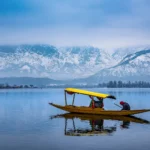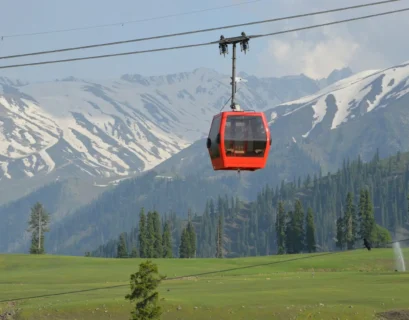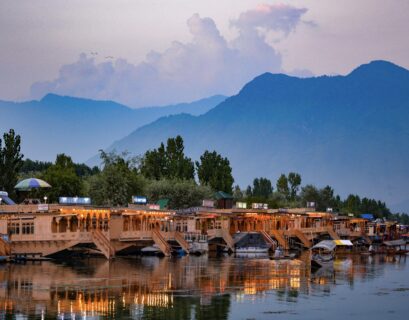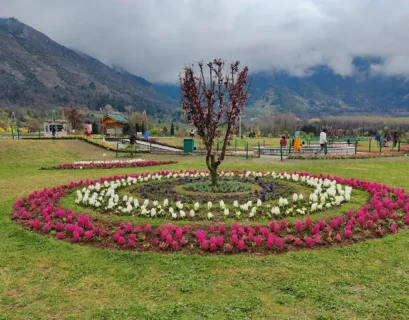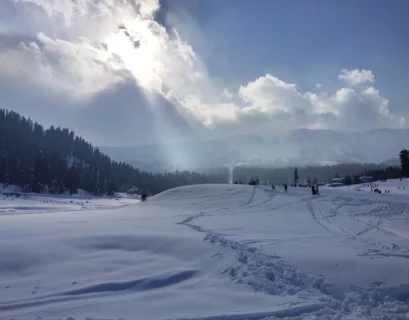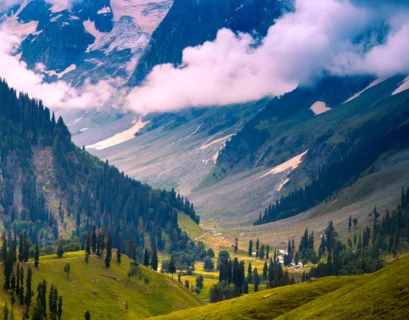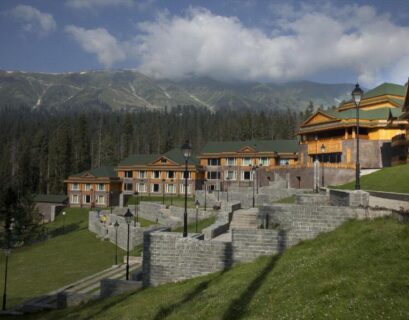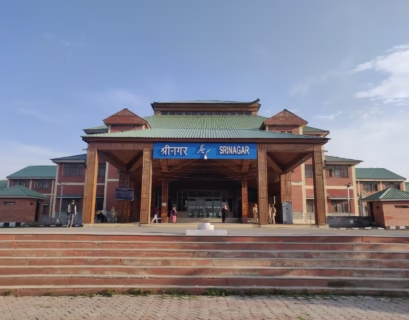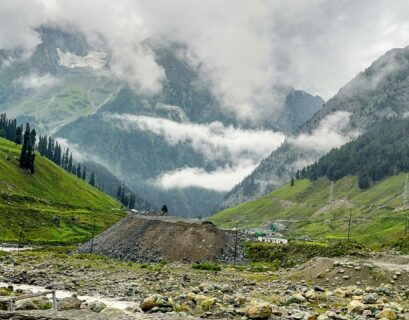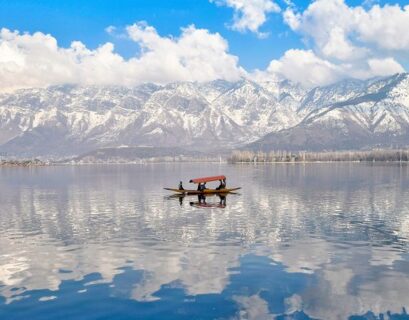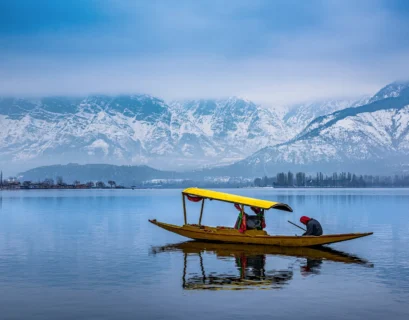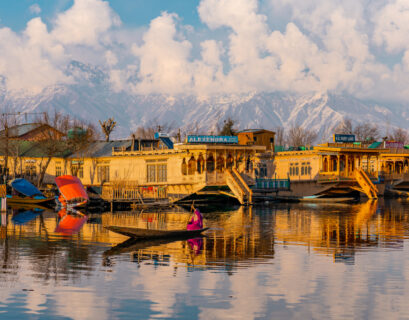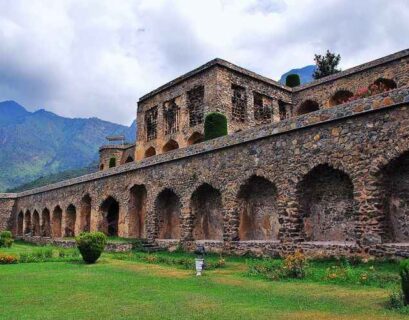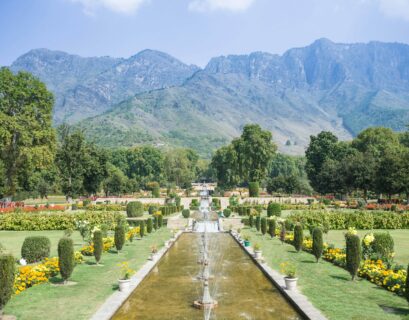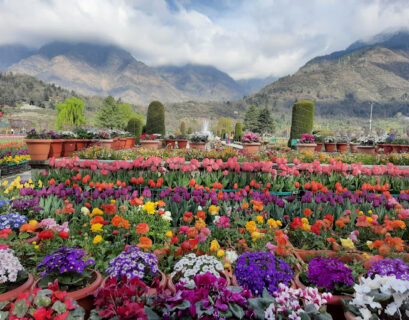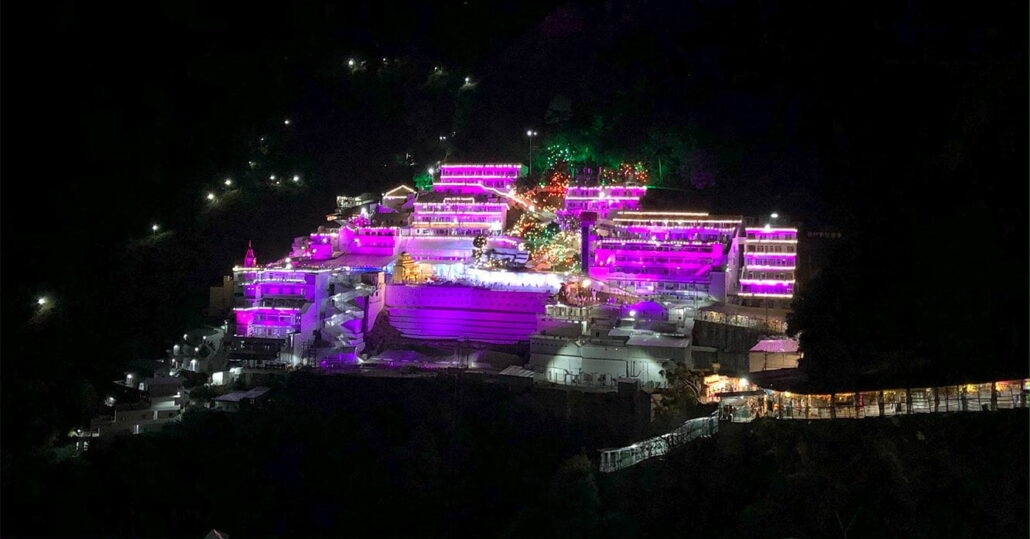Table of Contents
ToggleSrinagar Temperature Photos
Everything About Srinagar Temperature
Srinagar, the summer capital of Jammu and Kashmir, has long been celebrated for its breathtaking natural beauty, serene Dal Lake, and lush gardens. However, one aspect that often piques the interest of travelers, locals, and researchers alike is the Srinagar temperature. Whether you’re planning a visit, studying the region’s climatic trends, or simply curious about how the temp in Srinagar fluctuates throughout the year, this detailed guide will provide you with everything you need to know.
Read on to discover the intricacies behind the Srinagar temperature and understand how it shapes the lifestyle and environment of this magnificent region.
Introduction to Srinagar’s Climate
Srinagar, nestled in the Himalayan foothills, boasts a climate that is as diverse as its landscapes. The city’s weather is characterized by four distinct seasons, each offering a unique experience for residents and visitors. The Srinagar temperature can vary dramatically from one season to the next—ranging from the chilly, sometimes snowy winters to the pleasantly warm summers.
The Significance of Understanding Local Climate
Understanding the temp in Srinagar is essential for several reasons:
- Tourism: Travelers can plan trips based on favorable weather conditions.
- Agriculture: Local farmers rely on seasonal temperature trends for crop planning.
- Daily Living: Residents adjust their lifestyles, clothing, and activities according to the season.
- Environmental Studies: Researchers monitor climate changes to study the impact on local ecosystems.
By grasping these temperature patterns, stakeholders can make informed decisions, ensuring both safety and enjoyment throughout the year.
The Climatic Overview: What Influences Srinagar Temperature?
Geographical Location and Altitude
Srinagar is situated at an elevation of approximately 1,585 meters (5,200 feet) above sea level. Its high altitude and proximity to the Himalayas play a crucial role in determining its climate. The region experiences cool breezes and a significant amount of diurnal temperature variation—that is, noticeable changes between daytime and nighttime temperatures.
Proximity to Water Bodies
The famous Dal Lake and several freshwater streams contribute to Srinagar’s microclimate. Water bodies tend to moderate extreme temperatures, meaning that the temp in Srinagar might feel more balanced compared to regions further away from large water sources. During the summer months, the lake helps to lower the overall heat, while in winter, it can contribute to localized fog and chilly air.
Monsoon Impact
The monsoon season, which typically spans from July to September, is a critical period for the Srinagar temperature. Rainfall during this time cools the atmosphere and boosts humidity. While the summer heat can be intense, the monsoons provide relief, leading to cooler evenings and lush, green landscapes. However, the increased humidity and occasional heavy rainfall also demand preparedness from visitors and locals alike.
Seasonal Breakdown of Srinagar Temperature
One of the most intriguing aspects of Srinagar’s weather is its pronounced seasonal changes. Each season brings distinct characteristics to the temp in Srinagar, making the city an all-season destination.
Spring: The Season of Rejuvenation
Duration: March to May
Temperature Range: Approximately 8°C to 20°C (46°F to 68°F)
Spring in Srinagar is a magical time when nature awakens from its winter slumber. The Srinagar temperature during this period is mild and comfortable, ideal for outdoor activities. Blossoming gardens, the gradual melting of winter frost, and a crisp, clear atmosphere create a rejuvenating environment. The temperate weather encourages locals and tourists to explore the Mughal gardens, take leisurely boat rides on Dal Lake, and enjoy the blossoming orchards.
Summer: Warm Days and Cool Nights
Duration: June to August
Temperature Range: Approximately 18°C to 30°C (64°F to 86°F)
Summer is perhaps the most popular season for visiting Srinagar. Despite the increased sunshine, the temp in Srinagar rarely becomes overwhelmingly hot. The city benefits from cool mountain breezes, and temperatures are pleasantly moderate. Daytime activities, such as exploring historic sites, indulging in water sports on Dal Lake, or hiking in the nearby mountains, are enjoyable due to the balanced warmth. Evenings offer cooler air, making it a perfect time for street food adventures and local cultural events.
Autumn: A Palette of Warm Hues
Duration: September to November
Temperature Range: Approximately 10°C to 25°C (50°F to 77°F)
Autumn in Srinagar is characterized by a gradual drop in temperatures, alongside the transformation of foliage into brilliant shades of red, orange, and yellow. The Srinagar temperature in autumn is ideal for those who appreciate moderate weather and scenic beauty. The crisp air and clear skies offer excellent conditions for photography, sightseeing, and enjoying the peaceful ambiance of the city’s natural attractions. This season is also when local festivals and cultural events peak, providing a rich tapestry of art and tradition.
Winter: A Wonderland of Snow
Duration: December to February
Temperature Range: Approximately -5°C to 8°C (23°F to 46°F)
Winter in Srinagar is a season of contrasts. While the city is known for its snowy landscapes and serene winterscapes, the temp in Srinagar can sometimes plunge to sub-zero levels, especially during cold snaps. Snowfall transforms Srinagar into a winter wonderland, attracting enthusiasts of winter sports, photography, and simply those who wish to experience a traditional snowy environment. However, the cold also requires residents and visitors to take extra precautions in terms of clothing, heating, and travel plans.
Historical Temperature Trends and Modern Changes
Past Climatic Patterns
Historically, Srinagar has experienced a relatively stable climate with well-defined seasonal patterns. Records from meteorological departments indicate that the Srinagar temperature has traditionally followed the natural rhythm of the Himalayan region. Spring and autumn have always been marked by moderate weather, while summers and winters have shown noticeable variations influenced by altitude and monsoon patterns.
Impact of Climate Change
Like many regions around the globe, Srinagar is not immune to the effects of climate change. Over recent decades, there have been noticeable shifts in the temp in Srinagar:
- Warmer Summers: Data suggests that summer temperatures have shown a slight increase, leading to prolonged warm periods.
- Erratic Winters: Winter months have become less predictable, with some years experiencing more extreme cold snaps, while others show milder conditions.
- Altered Monsoon Patterns: Changes in the timing and intensity of the monsoon season have also been recorded, affecting both the temperature and overall weather conditions.
These trends have prompted local authorities and researchers to conduct ongoing studies to better understand and adapt to the evolving climatic conditions.
Technological Advancements in Temperature Monitoring
With the advent of modern meteorological technology, monitoring the Srinagar temperature has become more precise. Satellite imagery, advanced weather stations, and real-time data analytics have revolutionized how weather predictions are made. This technological evolution not only helps in planning daily activities but also aids in disaster preparedness and environmental conservation efforts.
The Best Time to Visit Srinagar Based on Temperature
Choosing the right time to visit Srinagar largely depends on personal preferences and the type of experience one seeks. Here’s a breakdown of what you can expect during different times of the year:
For Nature Lovers and Photographers
Spring and Autumn are ideal for those who wish to capture the natural beauty of Srinagar. The Srinagar temperature during these seasons is moderate, making it perfect for outdoor photography, nature walks, and exploring the city’s lush gardens and landscapes. The vibrant colors in autumn, in particular, offer a stunning backdrop for any photographic expedition.
For Adventure Seekers and Winter Enthusiasts
If you’re drawn to winter sports, snow activities, or simply enjoy the charm of a snowy landscape, winter is the season for you. The crisp, cold temp in Srinagar creates an enchanting environment, ideal for skiing, snowboarding, or just savoring a warm cup of traditional Kashmiri chai by a fireside. It’s important to dress warmly and be prepared for occasional travel delays due to snow-covered roads.
For a Relaxed Summer Escape
Summer is perfect for families and leisure travelers. The warm days paired with cool evenings make it an excellent time to visit. During this season, the temp in Srinagar is conducive to a variety of outdoor activities, including boat rides on Dal Lake, picnics in sprawling gardens, and leisurely strolls through ancient bazaars. The overall moderate heat and abundant sunshine provide a delightful escape from the scorching temperatures found in other parts of the country.
How Local Culture and Lifestyle Adapt to Temperature Variations
Traditional Attire and Winter Preparations
The residents of Srinagar have long adapted their lifestyles to the region’s climatic conditions. In winter, traditional Kashmiri attire such as the pheran—a long, loose gown—is commonly worn. This garment is designed to provide warmth and comfort during the colder months. Homes are often equipped with heating systems, and local cuisine features hearty dishes that help combat the chill.
Summer Festivities and Cultural Events
During the warmer months, Srinagar comes alive with festivals, fairs, and outdoor cultural events. The pleasant Srinagar temperature during summer is perfect for hosting large gatherings, traditional music concerts, and art exhibitions. These events not only celebrate the rich cultural heritage of the region but also take advantage of the natural light and comfortable weather conditions.
Environmental Sustainability Efforts
With the challenges posed by climate change and the noticeable shifts in the temp in Srinagar, local government and environmental organizations have initiated several sustainability programs. These initiatives aim to:
- Promote Renewable Energy: Encouraging the use of solar and wind energy to reduce dependency on fossil fuels.
- Enhance Urban Greenery: Increasing the number of green spaces in urban areas to mitigate heat and improve air quality.
- Climate Education: Raising awareness among residents about climate change and sustainable practices to preserve the region’s natural beauty.
Practical Tips for Managing Temperature Extremes
Whether you’re a resident or a visitor, being prepared for Srinagar’s temperature fluctuations is key to a comfortable experience. Here are some practical tips to help you manage the weather, regardless of the season.
Dressing for the Weather
- Layering is Essential: Given the significant diurnal variations, especially during transitional seasons like spring and autumn, layering your clothing can help you adjust to changing temperatures.
- Winter Essentials: Invest in thermal wear, quality coats, gloves, and warm footwear if you plan to visit during the colder months.
- Summer Comfort: Light, breathable fabrics and sun protection such as hats and sunglasses are advisable during the warmer months.
Planning Outdoor Activities
- Check Weather Updates: Always monitor local weather forecasts to plan your day. The temp in Srinagar can change unexpectedly, particularly during the monsoon season.
- Early Morning and Evening Outings: These times often offer the most pleasant temperatures for outdoor activities.
- Hydration and Sun Protection: Even in moderate climates, staying hydrated and protecting your skin from the sun is crucial.
Health and Safety Precautions
- Adapting to High Altitude: If you’re not accustomed to high altitudes, take it easy during your first few days to let your body adjust.
- Emergency Kits: Always have a small emergency kit, especially during winter, which includes warm clothing, a flashlight, and some basic medical supplies.
- Local Advice: Don’t hesitate to ask locals about the best ways to cope with the seasonal weather—they have firsthand experience that can be invaluable.
A Glimpse into Future Temperature Trends
As global warming and climate variability continue to impact weather patterns worldwide, predicting future changes in the Srinagar temperature has become an area of intense study. Researchers are using historical data combined with modern climate models to forecast potential changes, which may include:
- Increased Summer Temperatures: A possible gradual rise in summer heat, necessitating enhanced cooling measures.
- Altered Rainfall Patterns: Shifts in the monsoon patterns could lead to unpredictable weather, affecting both agriculture and daily life.
- Winter Variability: More pronounced fluctuations during winter may require further investments in infrastructure to ensure public safety.
These evolving trends underscore the importance of sustainable practices and proactive planning to mitigate adverse effects on both the environment and the local population.
Conclusion: Embracing the Diversity of Srinagar’s Climate
Srinagar, with its dynamic and multifaceted climate, offers more than just scenic beauty—it provides a living, breathing example of nature’s incredible adaptability. The Srinagar temperature is not just a meteorological statistic; it is a key part of the city’s identity, influencing everything from cultural traditions to everyday lifestyle choices.
By understanding the seasonal variations, historical trends, and future predictions, visitors and locals alike can better appreciate the beauty and challenges of life in this unique part of the world. Whether you are planning your next trip or studying climate patterns, keeping an eye on the temp in Srinagar is essential for making informed decisions.
The blend of natural splendor, cultural richness, and climatic diversity makes Srinagar a fascinating destination all year round. From the blooming gardens of spring to the snowy landscapes of winter, every season has its own story to tell—one that is written in the very fabric of its temperature and weather.
In planning your journey, consider not only the weather forecasts but also the cultural insights that make Srinagar a truly special place. With practical tips for dressing appropriately, engaging in outdoor activities, and embracing local traditions, you can fully enjoy the myriad experiences that the city has to offer. As climate trends evolve, staying informed will help you adapt and make the most of your time in this Himalayan gem.
Ultimately, whether your interest lies in tourism, environmental research, or simply the art of experiencing life’s natural rhythms, the story of the Srinagar temperature is one of continuous change, resilience, and beauty. So, the next time you plan a visit to this enchanting region, remember that the weather is not just a backdrop—it’s an integral part of the rich tapestry that makes Srinagar a must-visit destination.
By exploring the detailed aspects of the temp in Srinagar—from seasonal breakdowns to historical trends and future predictions—we hope this guide serves as a valuable resource for anyone interested in the fascinating climate of Srinagar. Embrace the weather, prepare for the shifts, and immerse yourself in the vibrant life that thrives in this extraordinary Himalayan city. Enjoy your journey, and may your experiences in Srinagar be as diverse and captivating as the seasons themselves.
Srinagar Temperature People Also Ask
What is the current temperature in Srinagar?
The current temperature in Srinagar changes throughout the day. For real-time updates, check reliable weather sources or local meteorological websites by searching “Srinagar Temperature.”
How can I check the current temperature in Srinagar?
You can view the latest temperature details on trusted weather websites like the India Meteorological Department, Weather.com, or through mobile apps such as AccuWeather that offer live updates.
What is the typical climate like in Srinagar?
Srinagar features a temperate climate with four distinct seasons. Summers are mild and comfortable, while winters tend to be cold with occasional snowfall. Spring and autumn offer moderate temperatures, making them ideal for sightseeing.
When is the best time to visit Srinagar for pleasant weather?
The most pleasant weather in Srinagar is during the spring (March to May) and autumn (September to November) when temperatures are moderate, the skies are clear, and the natural scenery is at its best.
How does the temperature in Srinagar vary by season?
Srinagar experiences seasonal temperature ranges: summer temperatures usually hover between 20°C to 30°C, while winter temperatures can drop below 0°C. Spring and autumn offer mild conditions, typically between 10°C and 20°C.
Is it too cold in Srinagar during winter?
Winters in Srinagar can be very cold, with temperatures often falling below freezing. However, the region’s winter charm—highlighted by snowfall—draws many visitors who enjoy the scenic, frosty landscapes.
How warm is Srinagar in summer?
Summers in Srinagar are generally warm yet pleasant, with temperatures rarely exceeding 30°C. This moderate summer climate makes the city an attractive retreat from hotter regions.
What are the average temperatures in Srinagar throughout the year?
On average, Srinagar’s temperatures range from about 10°C to 20°C annually. While the summer months are comfortably warm, winters can be quite chilly with averages sometimes dipping to around 5°C or lower.
Are there reliable weather apps to track Srinagar’s temperature?
Yes, popular apps like AccuWeather, Weather Underground, and The Weather Channel provide accurate, up-to-date information on Srinagar’s temperature and overall weather conditions.
Does Srinagar experience extreme temperature fluctuations?
While Srinagar’s overall climate is moderate, it can experience noticeable temperature variations during seasonal transitions, particularly in the early mornings and late evenings.
How does Srinagar’s temperature compare to other parts of Kashmir?
Srinagar generally enjoys a slightly milder climate compared to higher-altitude areas in Kashmir, which can be significantly colder. Local geography and elevation greatly influence these temperature differences.
What precautions should I take regarding temperature when visiting Srinagar?
Before traveling, check current weather forecasts and pack season-appropriate clothing. In winter, ensure you have warm layers, waterproof boots, and accessories like gloves and scarves; in summer, light clothing and sun protection are recommended.
How does elevation affect Srinagar’s temperature?
Elevation plays a key role in temperature variations. Areas within and around Srinagar at higher altitudes typically experience cooler temperatures compared to the city center.
Are there microclimates within Srinagar?
Yes, due to its diverse topography, different parts of Srinagar can experience microclimates. Factors such as urban density, proximity to water bodies, and elevation contribute to these localized temperature variations.
What is the historical temperature record for Srinagar?
Srinagar’s historical temperature records show a wide range from extreme winter lows to mild summers. Detailed historical data is available through local meteorological departments and climate research institutions.
Can I expect snowfall in Srinagar during winter?
Snowfall is common in Srinagar during the winter months. The resulting cold temperatures and snowy landscapes are a major attraction for visitors who enjoy winter sports and scenic beauty.
Is there a significant temperature drop at night in Srinagar?
Yes, Srinagar often experiences a noticeable drop in temperature after sunset. Even in the summer months, evenings can be considerably cooler than daytime, so bringing a light jacket is advisable.
How reliable are the temperature forecasts for Srinagar?
Temperature forecasts for Srinagar are typically reliable when sourced from reputable meteorological organizations and well-known weather apps. It’s best to consult multiple sources to get the most accurate information.
Are there seasonal temperature fluctuations in Srinagar?
Absolutely. Srinagar exhibits clear seasonal variations—with warm summers, cold winters, and transitional spring and autumn seasons—each bringing its own set of weather patterns and temperature changes.
What factors influence temperature changes in Srinagar?
Several factors affect Srinagar’s temperature, including altitude, local geography, seasonal weather patterns, and the influence of nearby water bodies. These elements work together to create the city’s dynamic climate.
How can I prepare for extreme weather conditions in Srinagar?
Preparation involves monitoring local weather updates, packing the right clothing for the season, and planning flexible itineraries. During periods of extreme weather, it’s wise to have indoor alternatives planned.
Does Srinagar have a monsoon season, and how does it affect temperature?
While Srinagar does experience a monsoon season, it is typically less intense than in other parts of India. During monsoon, humidity increases slightly and temperatures can drop a bit, but the overall climate remains relatively mild.
Are there significant temperature differences between day and night in Srinagar?
Yes, Srinagar often sees a significant temperature difference between daytime and nighttime, particularly during the transitional seasons. This diurnal variation is typical of temperate climates.
How can I get real-time updates on Srinagar’s temperature?
Real-time updates are available on numerous weather websites and mobile apps. Trusted sources like the India Meteorological Department or major global weather services provide accurate and current temperature readings.
What are some popular online resources for checking Srinagar weather and temperature?
For up-to-date information on Srinagar’s weather, visitors can use websites such as the India Meteorological Department, Weather.com, AccuWeather, and local news portals. These platforms offer detailed forecasts, historical data, and real-time temperature updates.


